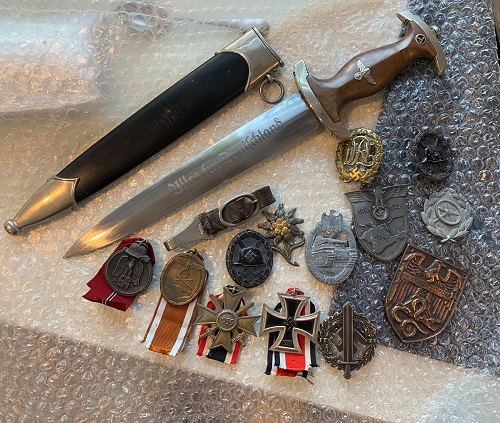
Connecting Students With The Past Through Historical Artifacts
Read Count : 279
Category : Blogs
Sub Category : Miscellaneous
In the quest to make history come alive, educators have uncovered a remarkable strategy—immersing students in a world of historical artifacts, like World War 2 memorabilia. Each artifact, offers a unique lens to view the past. This creative approach does not just teach history; it invites students on a captivating journey that sparks curiosity and deepens their understanding. Diaries Imagine diving into historical diaries as if you were stepping into another person's shoes. Students explore history through the eyes of different viewpoints. They create their own diary, capturing the unfolding events as if they were living in that moment. This dynamic method encourages diverse perspectives, enriching class discussions and weaving a richer tapestry of the past. Designing diary covers that reflect homes or crafts adds a tactile layer to their historical exploration. Travelogues Students take on the role of a traveler with a purpose—exploring, speculating on land, or experiencing life as an immigrant. Through descriptive accounts, sketches, and artwork, they transport themselves and their peers back in time, painting a vivid picture of a changing landscape. Letters Letters bridge the gap between eras as students engage in written conversations from history. Paired as correspondents with differing viewpoints, students exchange letters that encapsulate the essence of the issues they are studying. This interactive approach encourages lively debates through the written word. Enclosures like family photographs, sketches, and keepsakes enrich their immersion in history's narrative. Newspapers Digital archives provide students with a treasure trove of news articles reflecting various historical perspectives. This strategy delves into the art of bias in language and its impact on shaping historical understanding. Working in teams, students create their own newspapers, presenting partisan views on pivotal events. This method captures the sociopolitical climate of the time through advertisements and cartoons, offering a well-rounded view of history's context. Election Speeches By diving into the rhetoric of election speeches, students transform into impassioned advocates for presidential candidates. Through writing speeches that champion specific aspects of a candidate's platform, they engage in formal debates that breathe life into the political discourse. Posters, slogans, and multimedia elements amplify the impact of their advocacy. Conclusion This dynamic blend of historical genres elevates the study of history from mere facts to a transformative experience. These strategies empower educators to bridge the gap between textbooks and real-life encounters. Teaching through these methods need not be expensive as one can get World War 2 memorabilia for sale.
Comments
- No Comments

